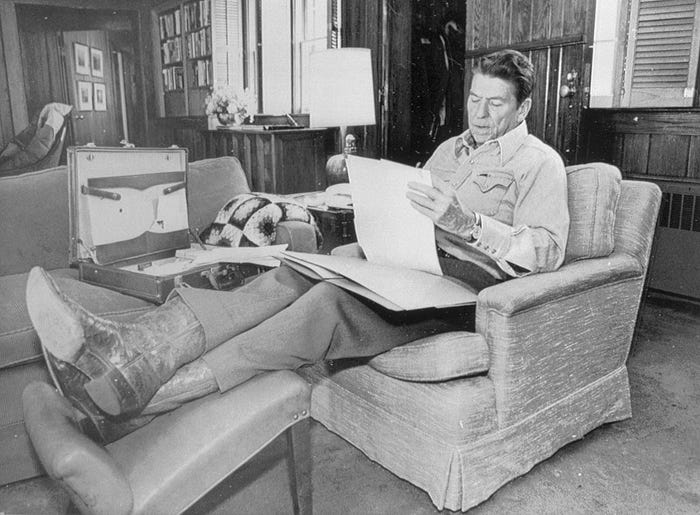Top Stories
Camp David’s Evolution: How the Presidential Retreat Transformed

BREAKING NEWS: Recent reports highlight the significant changes at Camp David, the presidential retreat in Maryland, showcasing its transformation over the decades. Established by President Franklin D. Roosevelt in 1942, Camp David has evolved into a vital escape for U.S. presidents, offering a unique blend of relaxation and diplomacy.
Located in the scenic Catoctin Mountains, this 180-acre retreat has seen enhancements from every president since Roosevelt. President Dwight Eisenhower famously renamed it from “Shangri-La” to “Camp David” in honor of his grandson in 1953. The retreat was initially created as a summer camp for government employees during the New Deal but has since become a hallmark of presidential leisure and international diplomacy.
Over the years, significant upgrades have been made. Presidents have added facilities such as a heated swimming pool, a non-denominational chapel, and even a presidential golf cart dubbed “Golf Cart One.” These amenities allow leaders to unwind and engage with global counterparts in a more relaxed environment.
DETAILS: The retreat has historical significance, serving as the backdrop for pivotal diplomatic moments, including the 1978 Camp David Accords facilitated by President Jimmy Carter. During this summit, Carter brought together Egyptian President Anwar Sadat and Israeli Prime Minister Menachem Begin to negotiate a peace treaty, marking a turning point in Middle Eastern politics.
As recent as June 9, 2025, former President Donald Trump utilized Camp David for high-level discussions concerning U.S. strategy in the Middle East. Reports indicate he met with his foreign policy team to address urgent issues, including a ceasefire between Israel and Hamas, underlining the retreat’s continued relevance in modern governance.
Meanwhile, the decor and amenities at Camp David have shifted with each administration. During President Joe Biden’s term, the interior has seen a modernization, moving away from the plaid couches and wicker furniture favored in earlier decades. This evolution reflects not only changes in personal tastes but also a broader trend towards a more sophisticated ambiance suitable for contemporary diplomacy.
IMPACT: The significance of Camp David extends beyond its physical features; it represents a space where critical political decisions are made. The retreat has become synonymous with presidential leadership, allowing leaders to engage in serious discussions while enjoying the tranquility of nature.
As the world watches, the legacy of Camp David continues to grow. Its rich history and the evolving preferences of each president highlight the intersection of politics and personal space, making it a focal point of interest for scholars and citizens alike.
NEXT STEPS: Observers are keen to see how future leaders will utilize Camp David, particularly in an era of heightened global tensions. The retreat’s role in facilitating dialogue and fostering international relations remains as vital today as it was during its inception.
As developments unfold, Camp David stands as a symbol of U.S. presidential history, encapsulating the essence of leadership and diplomacy in a serene yet powerful setting. Stay tuned for more updates on this iconic retreat.
-

 Science2 weeks ago
Science2 weeks agoUniversity of Hawaiʻi Joins $25.6M AI Project to Monitor Disasters
-

 Business3 weeks ago
Business3 weeks agoForeign Inflows into Japan Stocks Surge to ¥1.34 Trillion
-

 Top Stories3 weeks ago
Top Stories3 weeks agoMarc Buoniconti’s Legacy: 40 Years Later, Lives Transformed
-

 Top Stories3 weeks ago
Top Stories3 weeks agoBOYNEXTDOOR’s Jaehyun Faces Backlash Amid BTS-TWICE Controversy
-

 Health3 weeks ago
Health3 weeks agoInnovative Surgery Restores Confidence for Breast Cancer Patients
-

 Sports1 month ago
Sports1 month agoSteve Kerr Supports Jonathan Kuminga After Ejection in Preseason Game
-

 Science1 month ago
Science1 month agoChicago’s Viral ‘Rat Hole’ Likely Created by Squirrel, Study Reveals
-

 Lifestyle1 month ago
Lifestyle1 month agoKelsea Ballerini Launches ‘Burn the Baggage’ Candle with Ranger Station
-

 Entertainment1 month ago
Entertainment1 month agoZoe Saldana Advocates for James Cameron’s Avatar Documentary
-

 Top Stories3 weeks ago
Top Stories3 weeks agoCarson Wentz Out for Season After Shoulder Surgery: Urgent Update
-

 Politics1 month ago
Politics1 month agoDallin H. Oaks Assumes Leadership of Latter-day Saints Church
-

 Lifestyle1 month ago
Lifestyle1 month agoDua Lipa Celebrates Passing GCSE Spanish During World Tour









